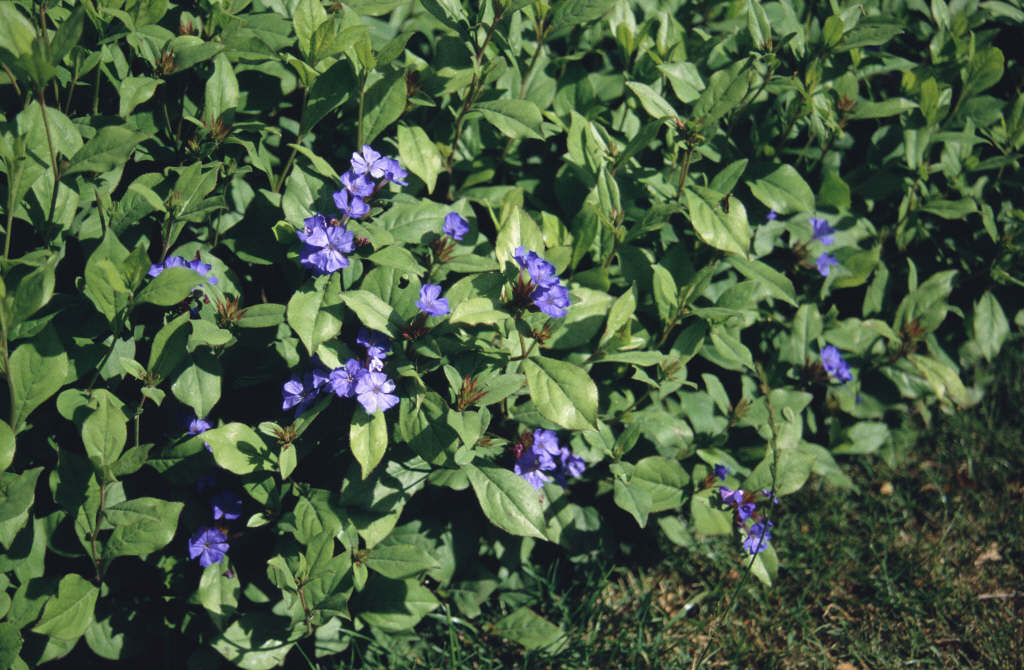Ceratostigma plumbaginoides

hardy blue-flowered leadwort
A low-growing, mat-forming herbaceous perennial with spreading roots, bearing oval-shaped green leaves turning red or purple in the autumn. Clusters of rich blue flowers appear from late summer
Size
Ultimate height
0.1–0.5 metresTime to ultimate height
2–5 yearsUltimate spread
0.1–0.5 metresGrowing conditions
Moisture
Moist but well–drained, Well–drainedpH
Acid, Alkaline, NeutralColour & scent
| Stem | Flower | Foliage | Fruit | |
| Spring | Green | |||
|---|---|---|---|---|
| Summer | Blue | Green | ||
| Autumn | Blue | Red Purple | ||
| Winter |
Position
- Full sun
Aspect
East–facing or South–facing
Exposure
Sheltered Hardiness
H5Botanical details
- Family
- Plumbaginaceae
- Native to GB / Ireland
- No
- Foliage
- Deciduous
- Habit
- Clump forming
- Genus
Ceratostigma can be evergreen or deciduous shrubs or herbaceous perennials, with simple leaves which usually colour well in autumn, and short terminal or axillary spikes of salver-shaped blue flowers in late summer and autumn
- Name status
Correct
- Plant range
- China
How to grow
Cultivation
Grow in moderately fertile, moist but well-drained soil in full sun
Propagation
Propagate by rooting softwood cuttings in spring or propagate by semi-hardwood cuttings in summer
Suggested planting locations and garden types
- Cottage and informal garden
- Mediterranean climate plants
- City and courtyard gardens
- Wildlife gardens
- Flower borders and beds
- Banks and slopes
Pruning
Cut back to ground level any shoots that get frost damaged
Pests
Generally pest-free
Diseases
May be susceptible to honey fungus (rarely) and powdery mildews
Get involved
The Royal Horticultural Society is the UK’s leading gardening charity. We aim to enrich everyone’s life through plants, and make the UK a greener and more beautiful place.
